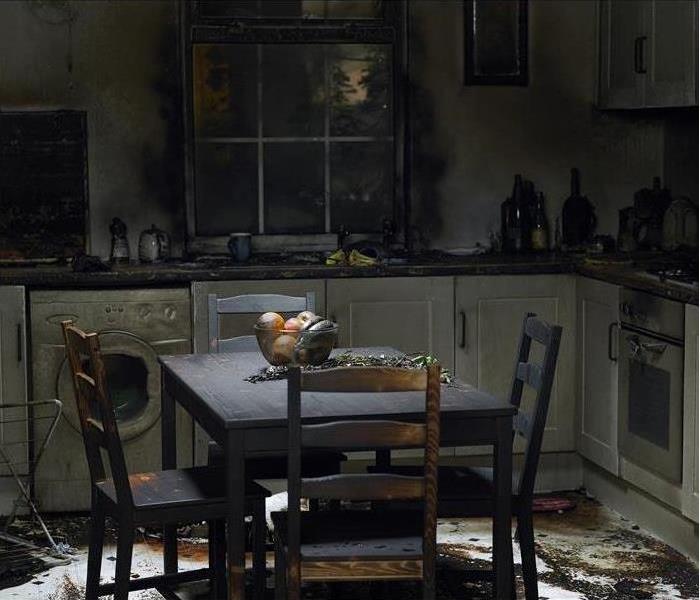How Do I Get Rid of Soot After a Kitchen Fire?
4/1/2022 (Permalink)
SERVPRO Removes Different Types of Soot Residues in Fort Lee Homes
After a fire in Fort Lee, you may notice that some residue comes off very quickly, while another residue is tough to remove. There are different types of smoke created from the burning material and the type of fire causing a variety of residues. The amount of oxygen present and the speed of the fire also contribute to the amount and type of smoke deposits. More than one kind of smoke residue is often present after a fire.
What is Smoke?
Smoke is a by-product of the material burning and is present in your fire damaged Fort Lee home. Smoke is gas and microscopic particles. The type of gases and aerosols present in smoke varies depending on the material burning. Oxides of nitrogen come from organic matter, while sulfur dioxide comes from inorganic matter. Gases such as carbon monoxide are hazardous during a fire but dissipate when the fire stops, leaving no residue from this oxygen stealing compound.
What is Soot?
- Soot is also known as smoke residue, which is the substance that settles on surfaces when the fire stops.
- There are different types of smoke residue; wet, dry, protein, and fuel.
- Wet smoke residue tends to be difficult to clean, leaving stains and penetrating porous surfaces.
How Do I Clean Smoke Residue?
- Technicians can often remove dry smoke by vacuuming.
- Wet smoke requires aggressive cleaning methods and products.
- Protein fires, usually in the kitchen, typically require a lot of odor removal. Protein fires do not normally cause much visible staining.
- Fuel oil smoke residue often comes from furnaces exhausting old smoke and is typical.
For assistance after a fire, Contact SERVPRO of Fort Lee at (201) 496-6024. We make it "Like it never even happened."






 24/7 Emergency Service
24/7 Emergency Service
